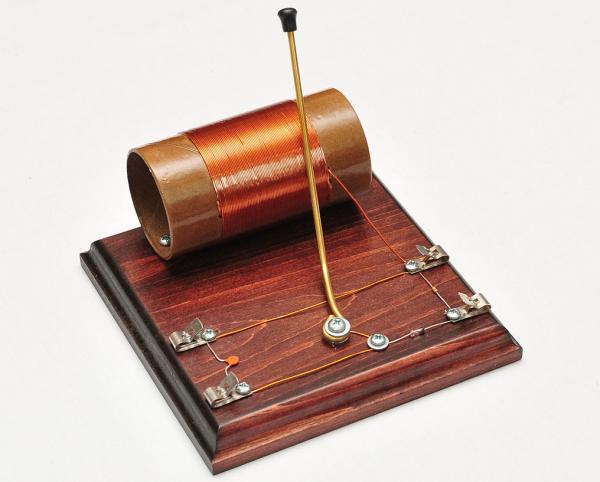Receiving the Zombie Apocalypse

WW2 soldiers called them “foxhole radios.” They were awfully primitive devices, that's for sure. But when you're hunkered down, half buried in dirt, listening for incoming, primitive will do just fine. You could cobble one together, creatively using materials such as razor blades, pencil leads, and even rusty nails. Then you could listen to radio broadcasts, in between the mortar rounds that were landing increasingly, uncomfortably close.
We are talking, of course, about crystal radios. First used in 1902, they launched a technological revolution. Due to their low cost and DIY design, crystal radios were widely used by consumers into the 1920's. They faded from practical use with the advent of vacuum tubes. A crystal radio is one of the most elegant inventions ever. The coolest part is that a crystal radio doesn't need batteries or any kind of power supply.
AC outlet? Nope.
Batteries? Nope.
Steam? Nope.
Solar? Nope.
Wind? Nope.
Nuclear? Nope.
The darn things are powered by the received radio waves themselves. I kid you not. Speaking of which, I made one when I was a kid. You probably made one when you were a kid. It's high time for you to make one with your grand kids.
There are innumerable variations on the theme, but a crystal radio essentially comprises a wire antenna, a coil of wire, a capacitor, a diode (functioning as a crystal detector) and some kind of transducer such as an earbud. That's it.
Theory of operation is simple: A radio signal induces a current in the antenna; the wire coil (an inductor) and the capacitor comprise a tuned circuit; the resonant frequency (and hence the frequency received) is selected by adjusting the coil; that resonant frequency passes through the circuit while other frequencies are blocked; the crystal detector rectifies (demodulates) the received alternating current radio signal to output the modulating signal (the audio signal); the very low-power output signal is sufficient to drive an earbud.
Of course, the crystal is the coolest part of the radio. Technically, we have a square law detector at work here. If you've heard of a “cat whisker,” this is what we are talking about. The detector in early radios was a splinter of a mineral crystal such as galena (lead sulfide) with a thin wire touching the side of the crystal. Hard-core enthusiasts still use cat whiskers, but a simple diode performs the same function.
As noted, because it is a passive device, a crystal radio has only the power from the received signal to accomplish its task. A signal of about 50 picowatts at the antenna is adequate, but you'll get that only if the AM signal is strong; typically the radio station must be fairly local (maybe within 20 miles or so). Even when the stars are aligned, and the earbud is tightly screwed into your ear, you will not risk hearing loss from the loudness of the output. Of course, you could amplify the audio signal (but that's no fun) but even then, you will not confuse the radio's sound quality with Hi Def Audio.
I hope you and your grandchildren enjoy making the radio. Who knows – maybe it will inspire them to pursue a STEM career. And when they are done playing with it, be sure to store it away in the basement. When the Zombie Apocalypse comes, you'll need it.





























































